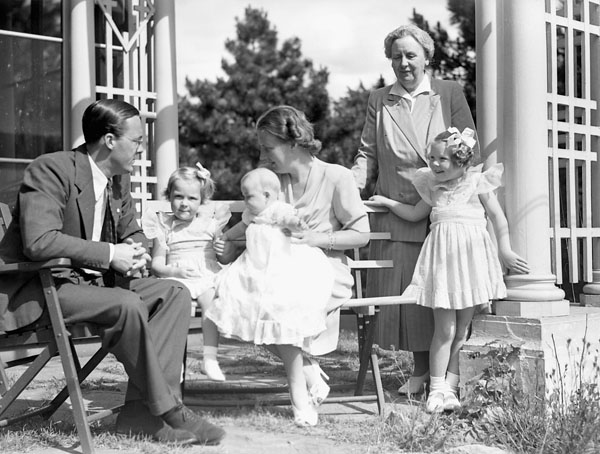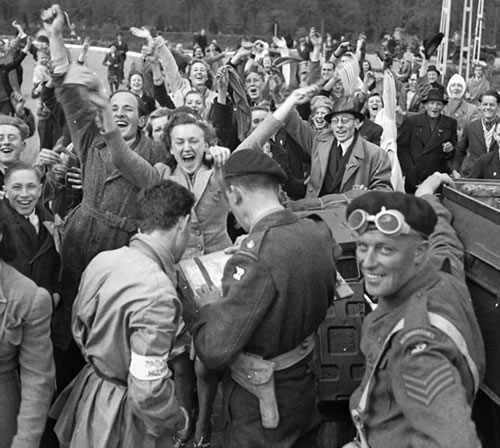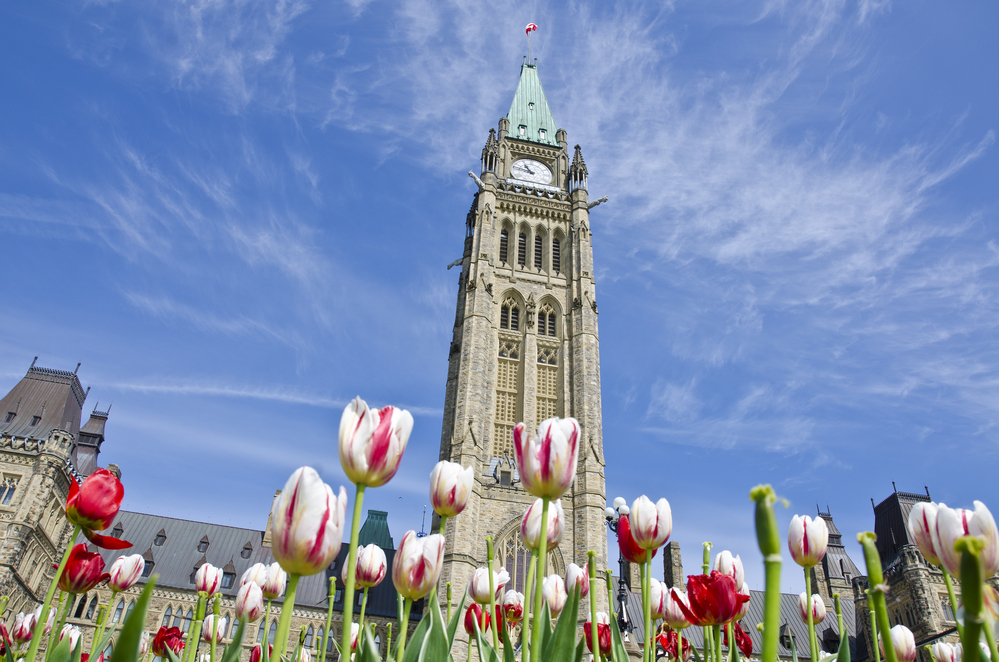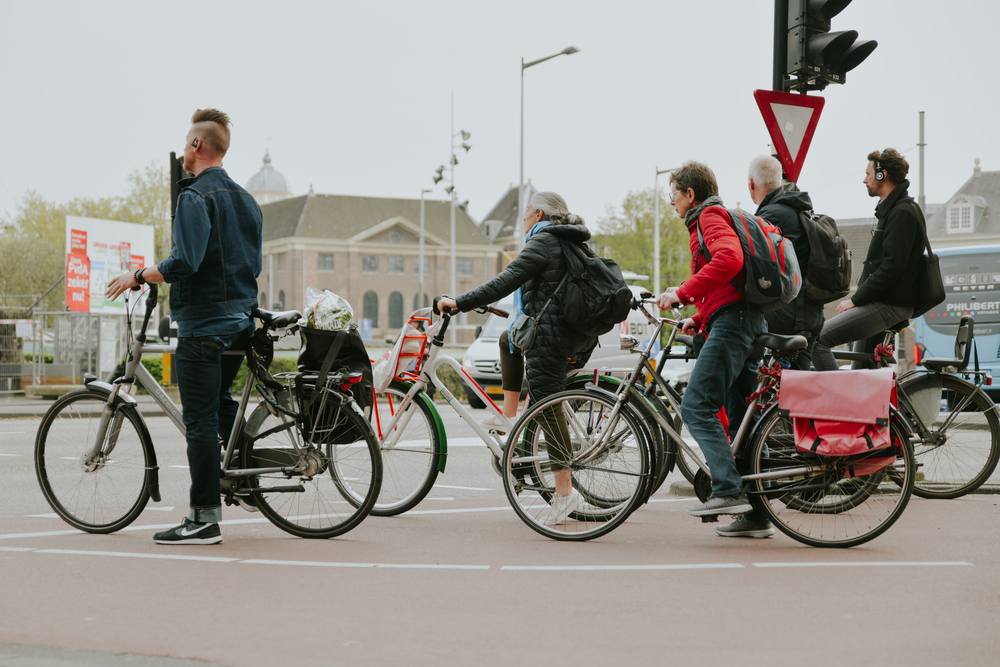Not many countries are as close and connected as these two. From their world war ties to their love for tulips, the Netherlands and Canada share many unique and surprising bonds.
Back in high school, I never understood why I had to study history. All the dates felt like random numbers strung together with the sole purpose of confusing my poorly-focused brain.
Over time, my interests have evolved and undoubtedly matured.
So, I’ve dusted off a piece of history that I think is quite interesting, given that I am a Canadian and have lived in the Netherlands for almost a year.
The story begins
Let’s rewind the clock 75+ years to a bleak and tragic time in history: World War II.
Unfortunately, the Netherlands’ goal to stay neutral was shattered when Nazi Germany invaded the tiny, flat country on May 10, 1940.

The day after Rotterdam was bombed on May 14, 1940 — leaving many dead and even more homeless — the Dutch surrendered to German troops to avoid similar attacks on other Dutch cities.
The birth of Princess Margriet in Canada
Following the German occupation of the Netherlands, the Dutch royal family decided to rule in exile from the United Kingdom.
The following month, Princess Juliana brings her daughters, Princess Beatrix and Princess Irene, to Ottawa, Canada for a safe harbour.

On January 19, 1943, Princess Juliana gives birth to her third daughter, Princess Margriet, at the Ottawa Civic Hospital.
The Canadian Government temporarily declares the hospital ward an international territory.
This meant that Princess Margriet inherited Dutch citizenship from her mother rather than receiving dual citizenship, which would affect her right to the throne when the time came. Now that’s what I call special treatment!
Canadian forces liberate the Netherlands
In 1945, the First Canadian Army led the liberation of the Netherlands along with the Allied forces.
They freed most of the Netherlands from almost five years of Nazi German occupation and provided the population with food and medical supplies.

On May 5 (Bevrijdigingsdag), Nazi German forces fully surrender in Wageningen.
READ MORE | Liberation Day in the Netherlands: what you need to know about May 5
The following months became known as the “Canadian Summer,” marking a time of peace and hope in the Netherlands.
The Canadian Tulip Festival
As a show of appreciation for Canada’s involvement in aiding the Netherlands during the war, Princess Juliana gifted the people of Canada 100,000 tulip bulbs. 🌷

When she became Queen of the Netherlands in 1948, she continued sending thousands of tulips every year during her reign.
Princess Juliana sure knows how to take a bouquet of flowers to the next level — romantics, take note.
READ MORE | The Dutch and tulips: how did tulips in the Netherlands become a thing?
This tremendous gift sparked great interest among Canadians and quickly became a popular tourist attraction.
The world-renowned Armenian-Canadian photographer Malak Karsh saw an opportunity to truly celebrate the tulips and what they represented.

At Malak’s suggestion, the Ottawa Board of Trade gave birth to the Canadian Tulip Festival.
The first one was held in 1953. Since then, the festival takes place every year in the month of May. How fitting!
Sharing winter wardrobes
The connection between the Dutch and Canadians doesn’t end there. When I was living in Amsterdam between 2012 and 2013, I encountered lots of surprising traits.

One of those things was the abundance of Canada Goose jackets worn by the tall Dutchies. 🧥
Seeing those jackets floating around the cobble-stoned streets of tiny Amsterdam with its canals and skinny houses quickly silenced my assumptions that these puffy jackets were only worn by Canadians.
Visa policies between Canada and the Netherlands
Putting wintery fashion aside, I would be remiss not to mention visas.
Both nations have more relaxed policies regarding travel to and from each country.
Canadians travelling to the Netherlands can stay there for up to three months without a visa and Dutchies can travel to Canada for up to six months without a visa.
READ MORE | Can I work in the Netherlands? Complete guide to work permits and visas to land a Dutch job
While living and working in the Netherlands, I participated in a Working Holiday Scheme, a program exclusive to a few countries, including Canada, Australia, and New Zealand.

This gives young Dutch and Canadian people an opportunity to stay in the Netherlands for up to 12 months while working to support their extended vacation filled with sightseeing, eating, and partying.
Okay, that’s not the official wording but that’s basically what it’s for.
My main intention was to find temporary work rather than vacation, although that was obviously a huge part of my stay. Work hard, play hard, right?
I will, however, commend your nation for bitterballen and its love of biking. For that, this Canadian will always have a tiny bit of Dutchness in her heart.
What are your thoughts on the special relationship between the Netherlands and Canada? Tell us in the comments below!





Great commentary jennifer! 🙂
Thanks bro 🙂
I grew up as a kid in Toronto and now I have been living in NL for 7 years….I must say I can relate to the article. Thanks for the article!! 😉
Then allow dual citizenship.. As a dutch person who lived in each country exactly for 18 years.. As you mentioned Holland is the pain in this case, not Canada.
You wrote this several years ago but I have to comment since my son is traveling in Holland right now. I was born in Santpoort, Velsen and have lived in Canada since I was 4 years old. I am so happy you wrote the truth about CANADA-HOLLAND being the ultimate BFFs. LOL it’s so true. We share the same laid back approach, we don’t take ourselves inappropriately serious, lean on the generous side, and share a similar sense of humor. it’s wonderful to “get” each other so quickly. I also lived in Ottawa for four years and was really touched at how … over 70 years later … the Dutch still send the tulip bulbs every year for the tulip festival.